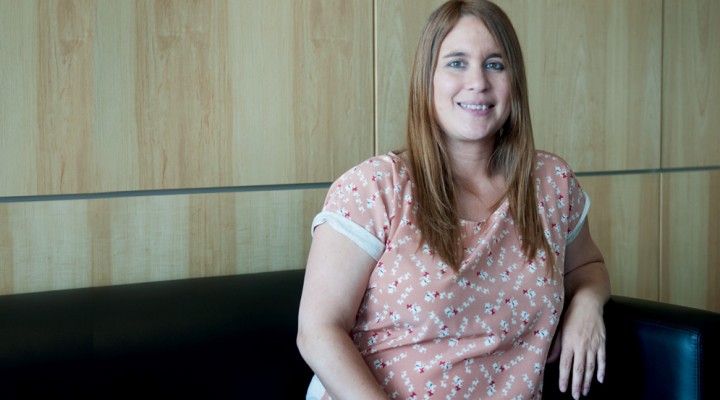TECHNOLOGY
Innovative products from national clays
Scientists at the Council participate in transfer activities to provide added value to an abundant natural resource in the country.
Since May 2012, Vera Alvarez, CONICET independent researcher at the Instituto Nacional de Investigaciones en Ciencia y Tecnología de Materiales (INTEMA, CONICET-UNMDP) [ Institute for Research in Materials Science and ], has run a research and development project that involves the partnership of public and private entities. The objective is to develop innovative products from plastic matrix materials modified with nanoclays – clay nanoparticles – from Argentina. The final products to be developed are polyethylene foams, useful to assemble thermal containers for shipment and storage of pharmaceutical products, and plastic pipes to transport oil.
The Associative Public–Private Partnership Agreements (PPPAs) comprises two public entities, the CONICET and the National University of Mar del Plata (UNMDP, in Spanish); four private companies: GIHON (Laboratorios Químicos SRL), Albano Cozzuol, Acsur, and Electroquímica DEM; and YPF – which belongs 51 % to the State and the Argentine provinces and 49% belongs to private capitals. The project is funded by the Fondo Argentino Sectorial (FONARSEC) of the National Agency for Science and Technology Promotion of the Ministry of Science, Technology and Productive Innovation.
“The objective of the partnership was to develop innovative products from a natural resource, which is economical and abundant in our country such as clay, which is obtained, for instance, in Mendoza, Neuquén and San Juan. This project aims to provide added value to this resource by spreading it, once modified, into plastic polymers with the aim of producing composite materials which serve to develop new products for different applications”, Vera Alvarez explains.
Plastics are synthetic polymers, macromolecules made up of the union of smaller molecules called monomers which are obtained artificially. Their modification through the addition of nanoclays improves some of their properties such as stiffness, heat resistance and abrasion – the wear resulting from the friction – or decrease their permeability.
In order to be compatible with most of the polymers or plastics where they are applied, clays – as extracted from the soil – must be chemically modified. “We expanded the range of possible modifications available in the market by looking for different characteristics for the nanoclay, such as higher thermal stability, lower cost or to turn them more environmentally friendly, among others. Depending on the final application, we designed the most suitable modification”, the researcher describes.
Applications in pharmaceutical and oil industry
This initiative aims at developing final products with improvements and benefits when compared to those that are currently being used. “Thermal boxes based on polyethylene foam modified by nanoclay would replace styrofoam containers – extruded polystyrene foam -, which is obtained through a more toxic process for the environment and is not recyclable. Furthermore, storage costs will be optimized because these foams, unlike polystyrene boxes that are very big, will allow people to have sheets and fold them at the time of packaging”, the researcher explains.
The tubes used for the transport of oil were made of iron but as they corroded, they were replaced by others made up of fibre-reinforced polymeric resin. The problem arose the operating conditions in oil wells in our country changed, since most wells were almost empty and hot water had to be injected to extract low volumes. This fluid, which was made up of hot water and little oil, started to degrade the fibre-reinforced plastic material.
“What the clay does is to delay the degradation and improve the performance under the new service conditions. The scientists developed tubes with longer useful life for current operating conditions” Alvarez comments.
In the course of the project, the companies that comprised the partnership agreement provided their knowledge and experiences in different fields of specialization: GIHON contributed to clay modification; Cozzuol, Acsur and DEM provided the dispersion of nanoclays in polymeric matrices. In the case of DEM, it was part of the development and assessment of thermal boxes while YPF produced the tubes. Apart from the FONARSEC subsidy, each member provided resources to carry out the project.
GIHON was in charge of the modifiers and the modifiers and scaling of modified clays, area in which they had experience. “Both the scaling laboratory process and its optimization were conducted by that company, which also contributed to the project in later stages related to the development of prototypes”, Alvarez states.
“For this initiative, we formed an interdisciplinary group with exchanges and weekly studies. In the course of the project, each part that was part involved discussed the partial results, the steps to follow and did continuous tests. The idea is to go on with the project after May, when it finishes formally”, the researcher concludes.
By Miguel Faigón
